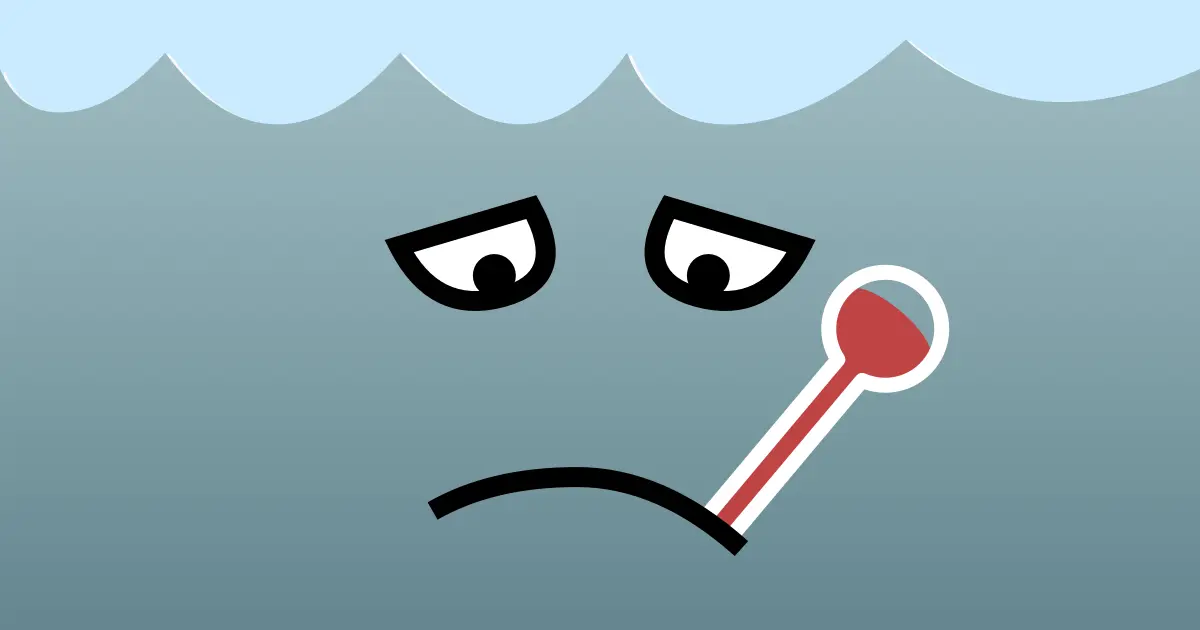
Blog / Our health… and the health of our oceans
In this article, we had initially planned to present the Monaco Ocean Week, organised each year by the Monaco Blue Initiative (MBI) and scheduled from 23rd to 27th March. However, the event (like many others around the world) was cancelled by its organisers due to the health crisis caused by COVID-19, as many of its participants had cancelled. Because of its importance, we have nevertheless chosen to keep the overall theme of this aborted meeting, concern for our oceans, while changing the focus.
Indeed, according to a study published by Scientific Reports in 20181, the North Pacific Garbage Patch (GPGP) would, in fact, be much larger than previously thought: it would extend over 1.6 million km²2 and would be composed of at least 79 thousand tons of plastic. Some of this waste is submerged only a few centimetres from the surface, while others are submerged several metres away. The report indicates that 85% of this waste is made up of plastics larger than 5 cm, including abandoned fishing gear (such as nets), plastic bottles, untreated waste that is dumped untreated into rivers and oceans3, and debris washed up from the Japanese coast during the tsunami in 2011.
This vortex, located between Hawaii and California, the “7th continent” or “the continent of plastic” as some people have nicknamed it, was discovered in 1997 by an American oceanographer, Charles J. Moore, as he was returning to California after completing the Transpacific, a sailing race from Los Angeles to Honolulu.
How did this wormhole form? The 7th Continent Association explains: “Under the effect of the Earth’s rotation, ocean currents create what are called oceanic gyres. These enormous eddies rotate clockwise in the Northern Hemisphere and counter-clockwise in the Southern Hemisphere. Sooner or later, plastic waste gets trapped in these gyres. […] The 5 main gyres are found in the North and South Atlantic, the North and South Pacific and the Indian Ocean.”4
According to UNESCO, plastic waste causes the death of more than a million seabirds and more than 100,000 marine mammals every year. It also has a lasting negative impact on the environment and the economic activity of populations, notably by destroying fishery resources and reducing the attractiveness of the coasts for tourists.
Initiatives such as The Sea Cleaners and The Ocean CleanUp have been developing for several years and aim to recover this floating plastic waste using new technologies. While the French project (The Sea Cleaners) aims to launch its ship by 2023, the 25-year-old Dutch inventor Boyan Slat has already started the adventure with his System 001/B.
After several years of testing, Boyan Slat and his team at The Ocean CleanUp have designed a self-contained system that uses ocean currents to capture and concentrate plastic. It consists of a U-shaped floating barrier, 3 meters deep, which holds the waste, and an extraction platform, powered by solar energy, for the subsequent extraction and recycling of the waste. Tested in June 2019, System 001/B proved that it can collect not only visible waste, but also microplastics smaller than 1mm. A new prototype is being tested in September 2019 in the North Pacific Waste Vortex to correct errors observed with the previous prototype. The operation appears to be a success.
The idea of The Ocean CleanUp doesn’t stop there: Boyan Slat also wants to tackle the problem of river contamination and is working on his project The Interceptor, a 24-metre autonomous barge, which draws waste to a conveyor belt, where it is then distributed in different containers. A signal is sent when the containers are full, so that local operators can come and empty them. By 2015, The Ocean CleanUp aims to clean up a thousand of the world’s most polluted rivers, selected by scientists. Two Interceptors are currently in operation: one on the Cengkareng Drain, in Jakarta (Indonesia), the other in Malaysia, on the Kelang River.
The Champion of the Earth 2014 (UNEP) hopes to continue and multiply its various projects thanks to participatory funding and its patrons who, for the moment, have proved to be up to its expectations. One of the challenges he has also set himself is the recycling of recovered plastics.
These kinds of initiatives, like the beach clean-up operations that are multiplying all over the world, although admirable, should not make us lose sight of the fact that the main problem remains the production and consumption of plastic itself, as well as the obvious lack of adequate treatment and recycling of waste. Cleaning up? Yes, of course. But, without drastic changes in our habits, we are condemned to eternally embody a modern version of Sisyphus.
-
Lebreton, L., Slat, B., Ferrari, F. et al. Evidence that the Great Pacific Garbage Patch is rapidly accumulating plastic. Sci Rep 8, 4666 (2018). https://doi.org/10.1038/s41598-018-22939-w ↩
-
Soit trois fois la taille de l’Hexagone. ↩
-
Selon l’association The Sea Cleaners, 8 millions de tonnes de déchets sont déversés chaque année dans les océans. ↩

Yasmina is a geographer. Her travels started when she was very young, through books. It continued when she discovered geograhy in class and then with a bag on her back.